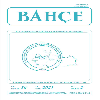İT ÜZÜMÜNÜN (Solanum nigrum) FİZİKOKİMYASAL ÖZELLİKLERİ
Halk arasında it üzümü olarak bilinen Solanum nigrum, Avrupa, Asya, Kuzey Amerika, Avusturalya ve Kuzey Afrika ülkelerinde yetiştiriciliği yapılan bir türdür. Botanik yönden Solanecea familyası içerisinde yer almasına karşın, meyve yapısından dolayı üzümsü meyveler grubu içerisinde değerlendirilmektedir. Bitkisi ağaççık formunda, yarı odunsu yapıya sahip olup, yapraklarının kenarları dişlidir. Meyveleri salkım şeklinde olup, bir salkımda ortalama 6-7 adet meyve bulunmaktadır. Meyveleri mor-koyu mavi renge sahiptir. Meyve eti sulu olup, içerisinde çok sayıda tohum bulunur. İçeriğinde bulunan çok sayıda fitokimyasal maddeler nedeniyle, meyvelerinden ve bitkinin diğer kısımlarından ilaç sanayisinde faydalanılmaktadır. Birçok ülkede farklı amaç için kullanılmasına rağmen, ülkemizde henüz yeterince tanınmamaktadır. Bu nedenlerle planlanan bu çalışmada, Antalya'da doğal alanda yetişen Solanum nigrum türüne ait meyvelerin bazı fizikokimyasal özellikleri incelenmiştir. Araştırma bulgularına göre ortalama meyve ağırlığı 0.44 g, meyve eni 7.8 mm, meyve boyu 8.3 mm olarak kaydedilmiştir. Titre edilebilir asit içeriği %0.95 ve suda çözünebilir kuru madde miktarı (SÇKM) ise %13.6 olarak belirlenmiştir. Meyvelerde glikoz dominant şeker olarak saptanmış ve bunu fruktoz ve sakkaroz izlemiş ve sırasıyla 3.39, 2.53, 0.81 g/100 g olarak saptanmıştır. Meyvelerde toplam fenoloik madde miktarı 2271.5 mg gallik asit eşdeğeri/kg, toplam monomerik antosiyanin içeriği 541.5 mg siyanidin-3-glikozid eşdeğeri/kg ve toplam antioksidan aktivitesi ise 2188.0 mg Teac /kg olarak kaydedilmiştir
PHYSICOCHEMICAL PROPERTIES OF BLACK NIGHTSHADE (Solanum nigrum)
PHYSICOCHEMICAL PROPERTIES OF BLACK NIGHTSHADE (Solanum nigrum) Solanum nigrum, also known as black nightshade among people, is a species grown in the countries of Europe, Asia, North America, Australia and North Africa. Even though it is botanically placed among the Solanecea family, it is considered to be under the groups of berry fruits because of fruit structure. Its plant is in the form of shrub, having a semi–woody structure, and the edges of its leaves are toothed. Its fruits are in clusters, there is an average of 6–7 fruits in a cluster. Its fruits are purple–dark blue in color. The fruit flesh is juicy and it has numerous seeds in it. Since it contains many phytochemical substances, its fruits and other parts of the plant are made use of in pharmaceutical industry. Although used for different purposes in many countries, it has not yet been recognized sufficiently in our country. In this study planned for these reasons, certain physico–chemical properties [fruit width and length, weight, soluble solid content (SSC), titrable acid, free sugar (sucrose, glucose and fructose), the total phenolic, total monomeric anthocyanin content and antioxidant activity capacity] of the fruits belonging to Solanum nigrum species grown in natural conditions in Antalya were examined. According to research findings, the mean fruit weight was recorded to be 0.44 g, fruit width 7.8 mm, fruit length 8.3 mm. Titratable acid content was recorded to be 0.95% and the amount of soluble solids 13.6%. Glucose was determined the dominant sugar in fruits, followed by fructose and sucrose, and they were determined to be 3.39, 2.53, 0.81 g/100 g, respectively. The total content of phenolic compounds in fruits was recorded to be 2271.5 mg of gallic acid equivalent/kg, total monomeric anthocyanin content 541.5 mg of Cyanidin–3–Glucoside equivalent/kg and total antioxidant activity 2188.0 mg Teac /kg
___
- 1. Anonim, 2005. Total Monomeric Anthocyanin Pigment Content of Fruit Juices, Beverages,Natural Colorants, and Wines. AOAC International 2005.02.
- 2. Fernández–León, M., A. Fernández–León, M. Lozano, M. Ayuso, M. Amodio, G. Colelli, and D. González–Gómez, 2013. Retention of Quality and Functional Values of Broccoli ‘Parthenon’ Stored in Modified Atmosphere Packaging. Food Control 31(2):302–313.
- 3. Fortuin, F. T. J. M. and S. W. P. Omta, 1980. Growth Analysis and Shade Experiment with Solanum nigrum L., The Black Nightshade, a Leaf and a Fruit Vegetable in West Java. Neth. J. Agric. Sci. 28(4):199–210.
- 4. Henderson, R. J. F., 1974. Solanum nigrum L. (Solanaceae) and Related Species in Australia. Contributions from the Queensland Herbarium, No. 16:1–78.
- 5. Jain, R., A. Sharma, S. Gupta, P. Sarethyi, R. Gabrani, 2011. Solanum nigrum: Current Perspectives on Therapeutic Properties, Alternative Medicine Review 16:78–83.
- 6. Schilling, E. E., Q. S. Ma and R. N. Anderson, 1992. Common Names and Species Identification in Blacknight Shades, Solanum sect. Solanum (Solanaceae). Econ. Botany 46(2):223–225.
- 7. Spanos, G. A. and R. E. Wrolstad, 1992. Phenolics of Apple, Pear, and White Grape Juices and Their Changes with Processing and Storage. A Review. Journal of Agricultural and Food Chemistry 40(9):1478–1487.
- 8. Tetik, N., I. Turhan, H. R. Oziyci and M. Karhan, 2011. Determination of d–pinitol in Carob Syrup. International Journal of Food Sciences and Nutrition 62(6):572–576.
- 9. Tosun, İ., S. Yüksel, 2003. Üzümsü Meyvelerin Antioksidan Kapasitesi. Gıda Mühendisliği Dergisi 28(3):305–311.
- 10.Uygur, F. N., W. Koch, H. Walter, 1986. Çukurova Bölgesi Buğday–Pamuk Ekim Sistemindeki Önemli Yabancı Otların Tanımı PLITS 4(1), F.U.T. Müllerbader, 7024 Filderstadt–Plattenhardt. Josef Margraf 169s.
- ISSN: 1300-8943
- Yayın Aralığı: Yılda 2 Sayı
- Başlangıç: 1968
- Yayıncı: Atatürk Bahçe Kültürleri Merkez Araştırma Enstitüsü
Sayıdaki Diğer Makaleler
UŞAK İLİ ÜZÜMSÜ MEYVE YETİŞTİRİCİLİĞİNİN BELİRLENMESİ
Ayşen Melda ÇOLAK, Yasin ÇETİN
İhsan CANAN, Mustafa Kenan GECER, Müttalip GÜNDOĞDU, Akif AŞICI
Mehmet Ali SARIDAŞ, Ömür DÜNDAR, Okan ÖZKAYA, Sevgi KARGI PAYDAŞ, Hatice DEMİRCİOĞLU, Nihal YAVUZ, Aslıhan ÖZKAYA²
FRENK ÜZÜMÜ ÇELİKLERİNİN KÖKLENMESİ ÜZERİNE ÇELİK ALMA ZAMANLARININ ETKİSİ
Mehmet POLAT, Volkan OKATAN, Ünzile VAROL
ANTALYA İLİNDE ÇİLEK YETİŞTİRİCİLİĞİNDE SON GELİŞMELER
Hamide GÜBBÜK, Nafiye ADAK, Berkay ÇELİK
Nurgül TÜREMİŞ, Ayşegül BURĞUT, Edanur KORKUT, Şebnem BÜYÜKYEL, Mukadder CÖMERTPAY
Halil İbrahim OĞUZ, Ebru KAFKAS, Bülent ZORLUGENDz, Feyza KIROĞLU ZORLUGENÇ
